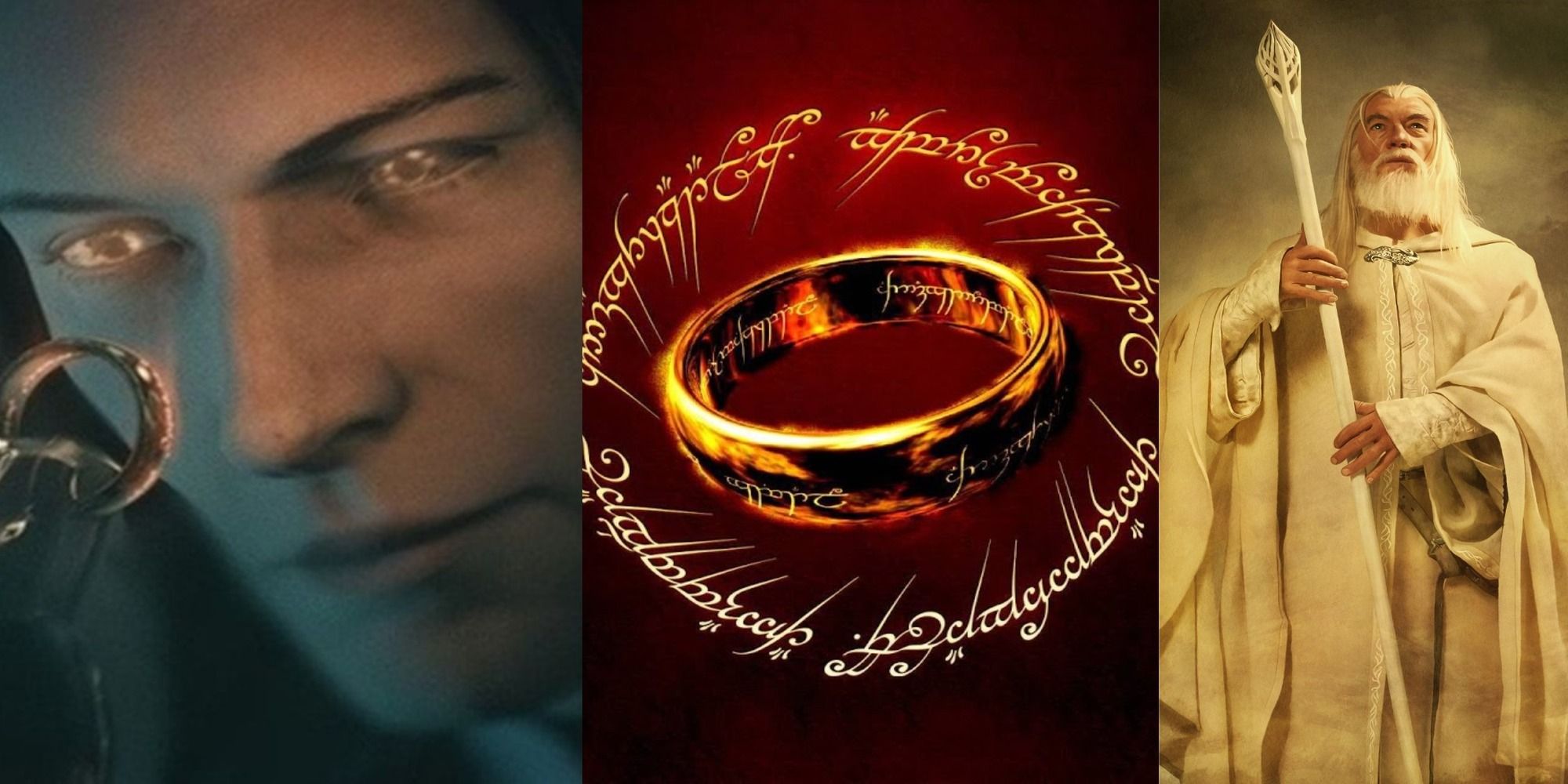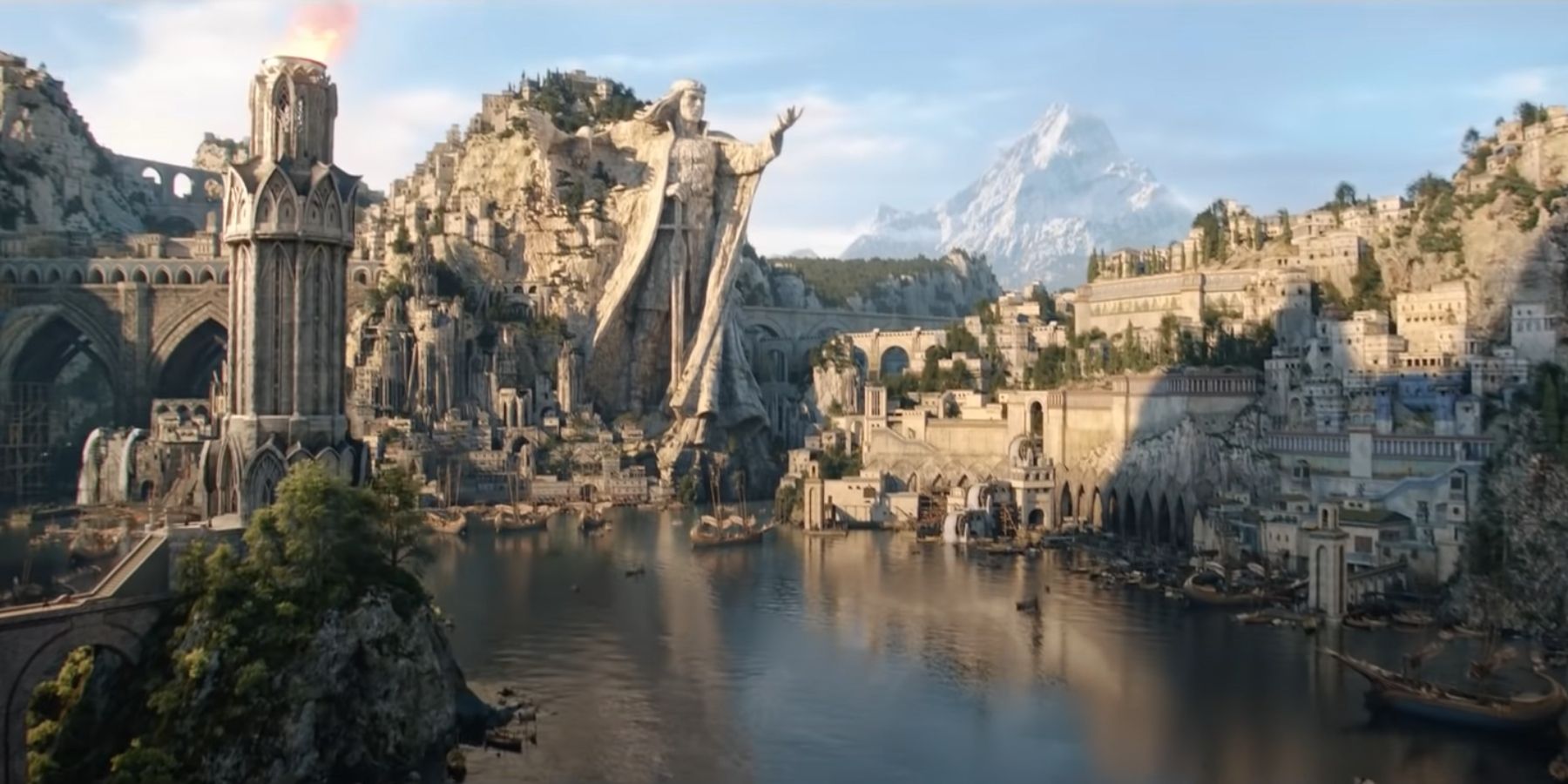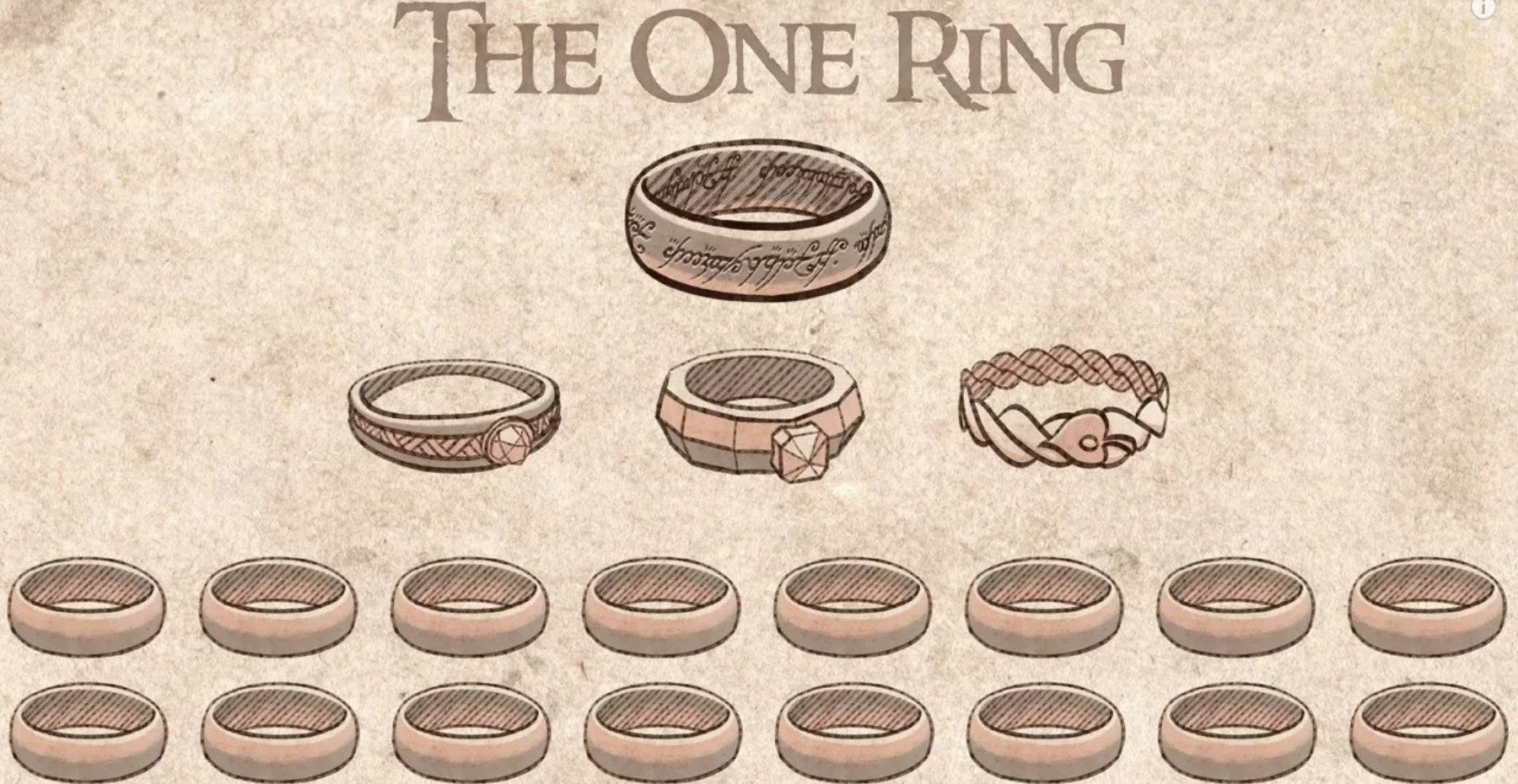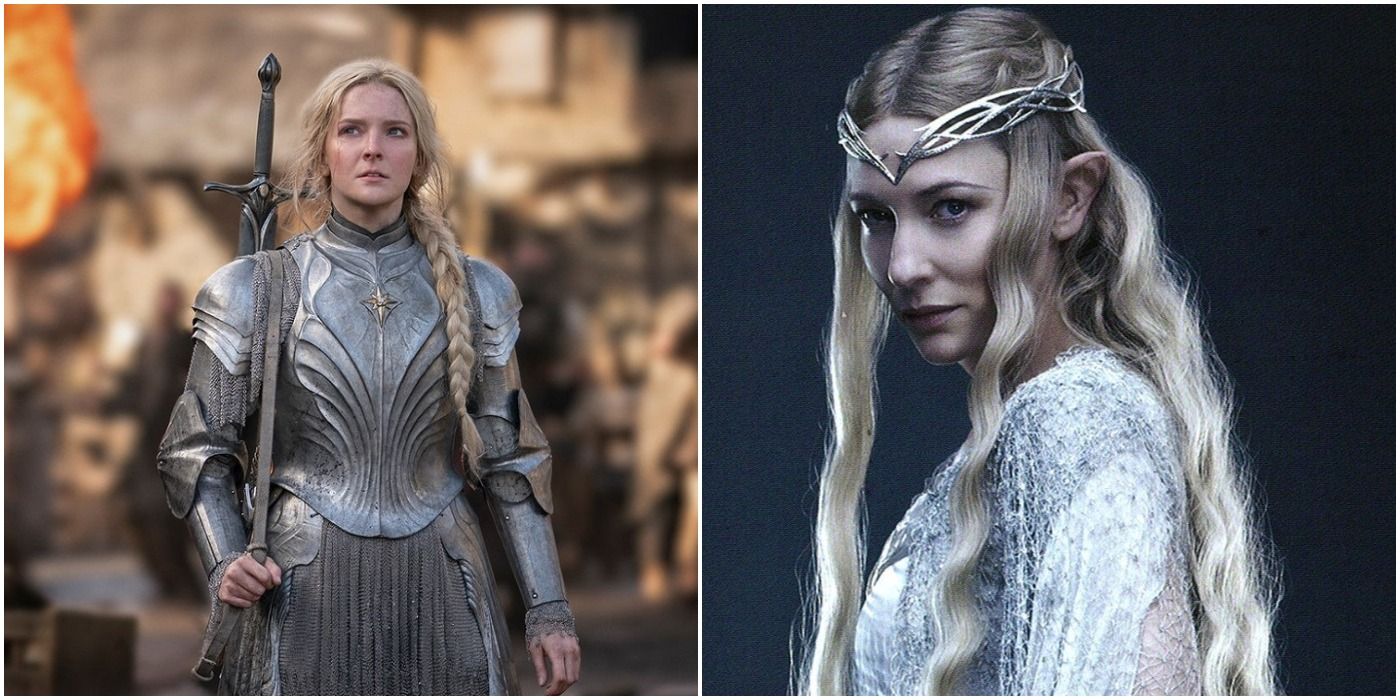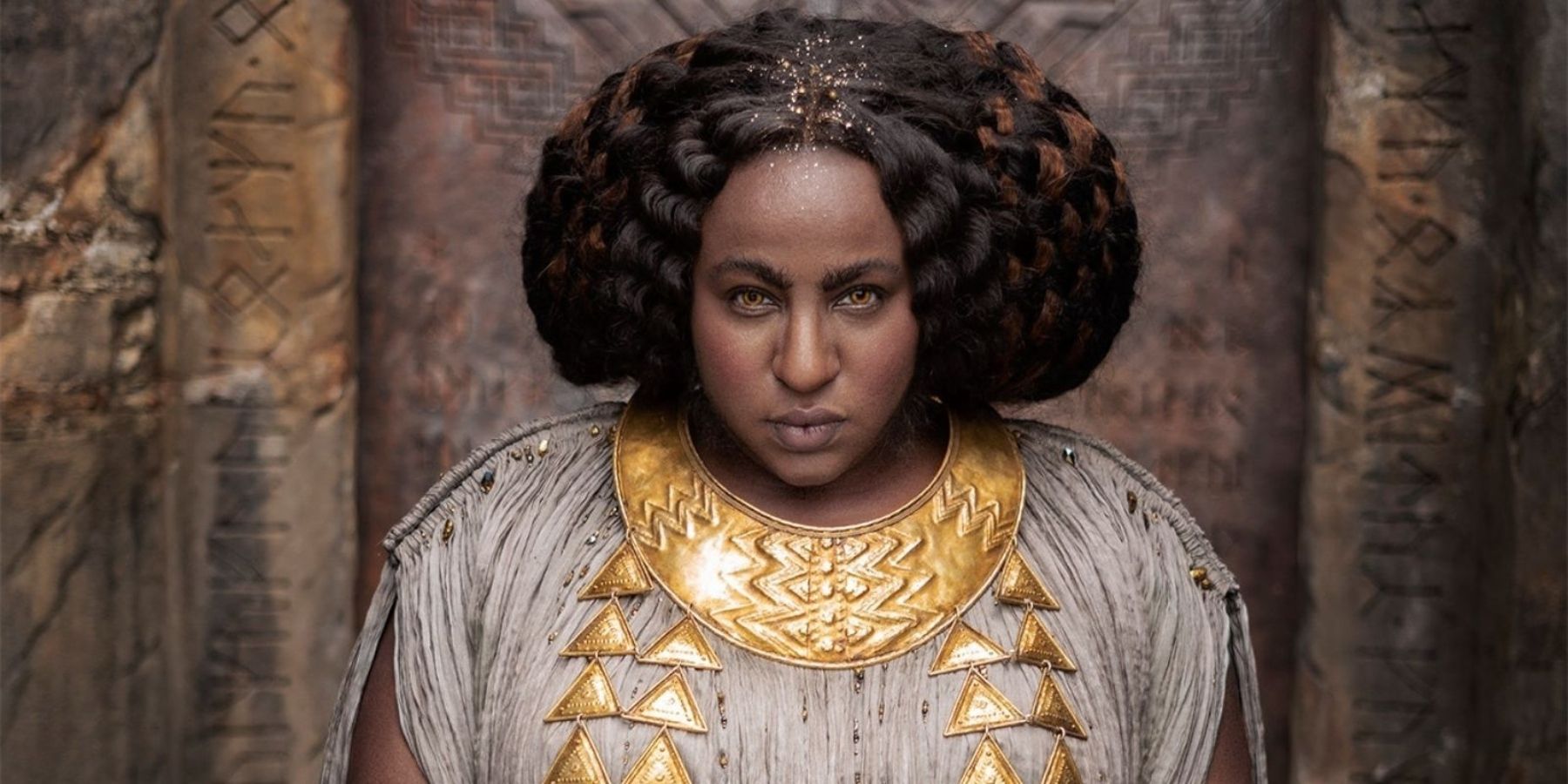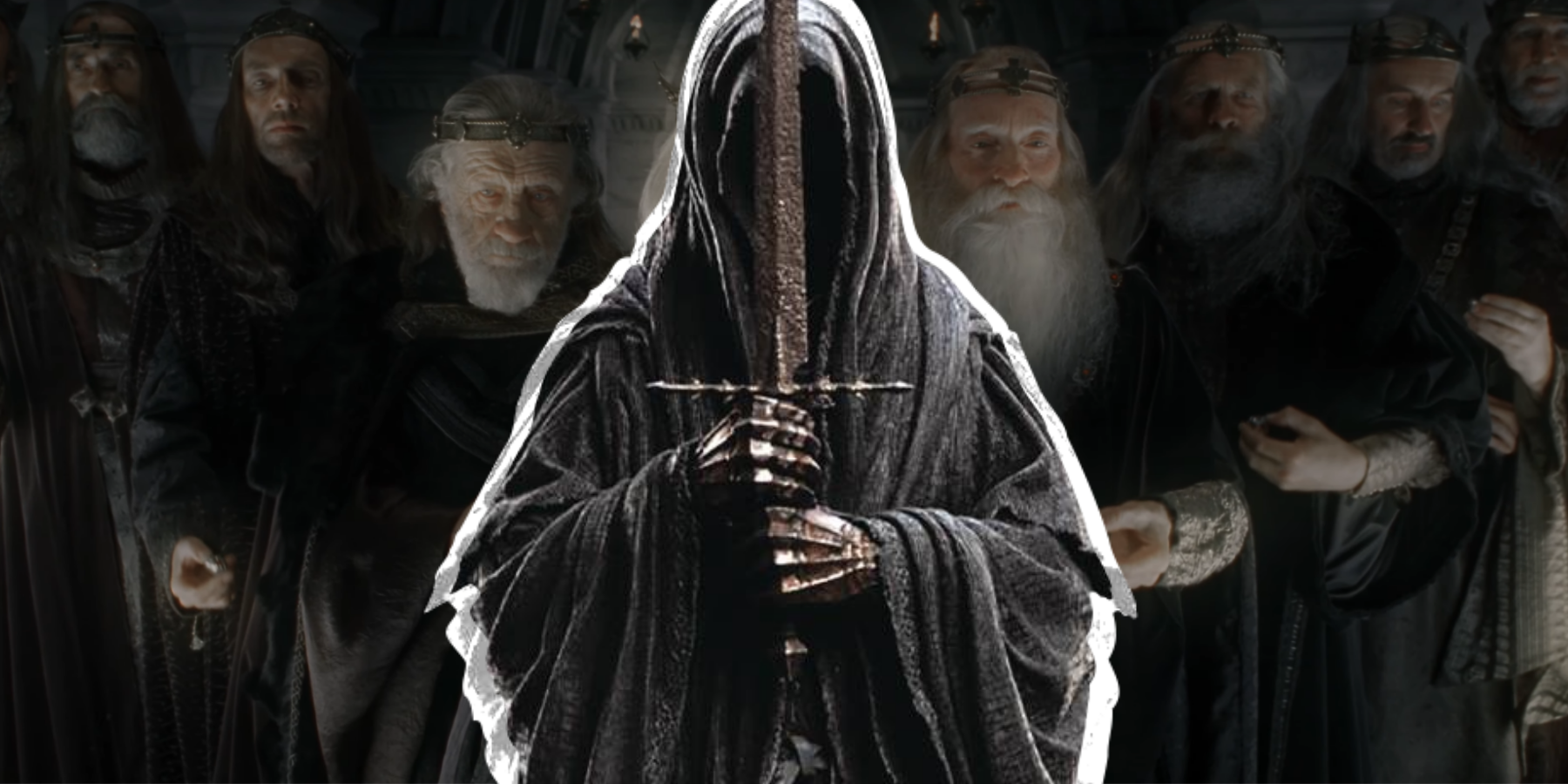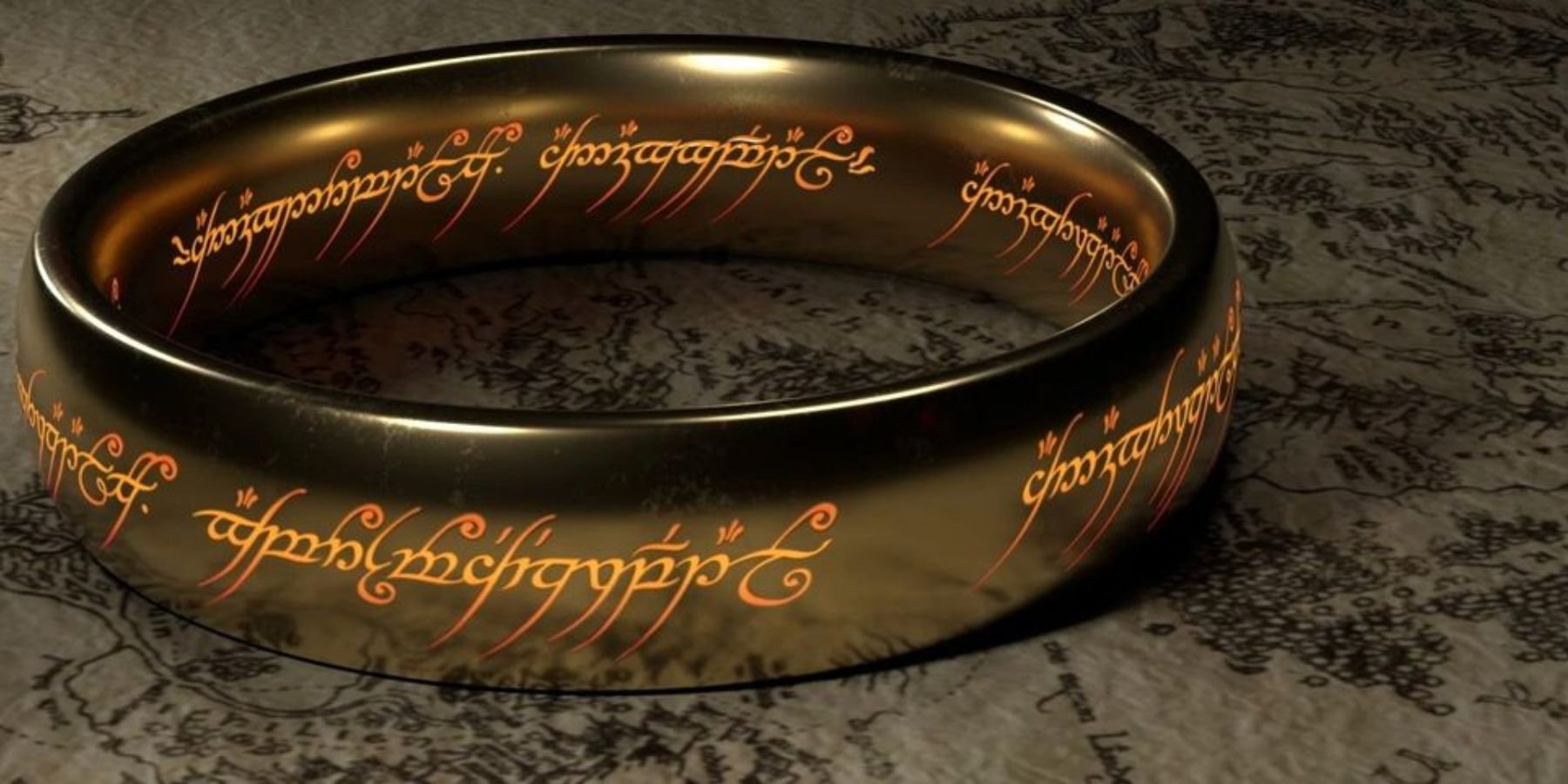The poem used to be a creed that only the nerdy among us knew, but now it's a pop-culture anthem. "One Ring to rule them all, and one ring to find them. One ring to bring them all, and in the darkness bind them." So went the poem that was written as an inscription on every copy of The Lord Of The Rings, and was quoted many times by prominent characters in the movies.
Fans who are only familiar with the movies will know the story of the Nine Rings of the Nazgûl, and the rings of Galadriel and Gandalf. However, there were actually many more that were made by Sauron with the intention of controlling the bearer. Meanwhile, there were others made in secret that are free from his influence.
They Were Forged During The Second Age
Many of the rings were made by the Elves of Eregion, led by Celebrimbor, the greatest master smith of the era. He was the grandson of Fëanor, the famous smith who had made the notorious Simarils during the First Age.
Fëanor had been seduced by Morgoth, and although Celebrimbor went along with the plan of the Ñoldor, his people, he knew the smooth-talking Sauron had a secret plan. The Dark Lord tried to trick the Elves, but they returned the favor, which led to his ultimate downfall at the end of the Third Age. They were also able to sense when he put on the One Ring, and removed their own rings at that time to keep them from Sauron's knowledge. It's suspected that Sauron never even knew they existed, even up to and during the War of the Ring.
The Known Rings
The lore of Middle Earth discreetly acknowledges that Sauron and his master, Morgoth, were shady characters that kept a lot of secrets. It was always assumed that they could have forged other rings that nobody in Middle Earth ever knew about. The Elves also made a variety of magical rings, many of which were lost or simply works in progress, and had simple but useful powers. When Bilbo first discovered the One Ring, Gandalf first assumed it was one of these "lesser" rings from ages past, until decades later.
Considering that Celebrimbor made three rings during this same era without Sauron finding out, it is entirely possible there are secret rings that were never found. Thus, the twenty rings that were forged during the Second Age are also referred to as The Known Rings.
The Three
"Three Rings for the Elven-kings under the sky" is the first line of the poem, and refers to the three rings that are almost free of Sauron's control. They were made without his knowledge, which might be why the Elves who wore them sensed the One Ring.
Elrond is the present holder of Vilya, the Ring of Air, which was formerly held by the King of the Ñoldor, Gil-galad. Narya, the Ring of Fire, is never named in the movies, but viewers with sharp eyes can see Gandalf wearing it in several scenes. The only other of the Three with more screen time is Galadriel's ring, Nenya, the Ring of Adamant. She openly reveals it to Frodo in Lothlórien in both the books and films.
The Seven
"Seven for the Dwarf-lords in their halls of stone" reads the second line, and refers to each of the separate nations of the Dwarves that were gifted rings by Sauron. If they had names, they are lost to time. It was in part the powers of these rings that allowed the Dwarves to amass great wealth, which was to both their good fortune and detriment. Unlike the Elves, they trusted Sauron implicitly.
It seems like this would be an easy win for the Dark Lord once he had crafted the One Ring, but the Dwarves were steadfast against his power and were able to resist him even as they continued to wear their rings. By the time the War of the Ring had come to pass, dragon fire had destroyed four of the seven rings, while Sauron had taken back the other three.
The Nine
"Nine for Mortal Men doomed to die" could be the best-known line of the poem, since it also refers to the chilling and memorable visage of the fearsome Nazgûl. Without the same level of resilience as their Dwarven peers, the human leaders who took the rings succumbed to Sauron's will and became his ghostly servants.
The Nine Kings knew great wealth and power in their time, and although they seemed to have long life, they were slowly turning into undead apparitions with no permanent hold on the material plane of Middle Earth. As Sauron grew in power during the Third Age, they did as well, so it's assumed that they continued to wear their rings until the One was destroyed.
The One
At last, the big number 20 — which is really the first, in the sense that it's bond to the others in some form and can control the wearers, at least in theory. Sauron's plan had a few weak links, starting with the resilience of the Dwarves and the wisdom of the Elves. Unlike the other 19 rings, the One Ring was forged not in Eregion by Celembribor, but by Sauron himself in Mount Doom, which is why it had to be returned there in order to be destroyed once and for all.
It's obvious at first glance that the One Ring was not made in the same style, nor by the same crafter, as the others. It is the only one without a stone or any embellishment of any kind, save for the writing which isn't usually visible.
After Isildur cut it from Sauron's hand at the end of the Second Age, he decided to keep the ring instead of destroying it. It was lost in the River Anduin at the beginning of the Third Age, until Gandalf the Gray identified it thousands of years later.

